Recent Papers
Full Paper J. Braz. Chem. Soc. 2026
Targeted Quantification of Bioactive Compounds from Anacardium humile and Anacardium occidentale by HPLC-MS/MS and Evaluation of Antioxidant Capacity
Naiara R. L. de Oliveira  ; Gabriel F. dos Santos
; Gabriel F. dos Santos  ; Hugo G. Machado
; Hugo G. Machado  ; Gesiane S. Lima
; Gesiane S. Lima  ; Nerilson M. Lima
; Nerilson M. Lima  ;
;
Lucas S. Machado  ; João V. B. Assis
; João V. B. Assis  ; Andrea R. Chaves
; Andrea R. Chaves  ; Boniek Gontijo
; Boniek Gontijo

The figure illustrates the targeted quantification of bioactive compounds from Anacardium humile and Anacardium occidentale using high-performance liquid chromatography mass spectrometry (HPLC-MS/MS), followed by an evaluation of their antioxidant capacity via the 2,2-diphenyl-1-picrylhydrazyl (DPPH) assay.
https://dx.doi.org/10.21577/0103-5053.20250152
J. Braz. Chem. Soc. 2026
Unravelling Sources of BPA Exposure in Southern Brazil: Contributions of Drinking Water and Thermal Paper to Daily Intake Assessment through Human Biomonitoring
Camila F. de Souza  ; Giovana P. Peteffi
; Giovana P. Peteffi  ; Marcos F. Bastiani
; Marcos F. Bastiani  ; Amanda P. Bondan
; Amanda P. Bondan  ; Giovanna S. Grassi
; Giovanna S. Grassi  ; Lilian L. F. Lizot
; Lilian L. F. Lizot  ; Roberta Z. Hahn
; Roberta Z. Hahn  ; Marina V. Antunes
; Marina V. Antunes  ; Rafael Linden
; Rafael Linden
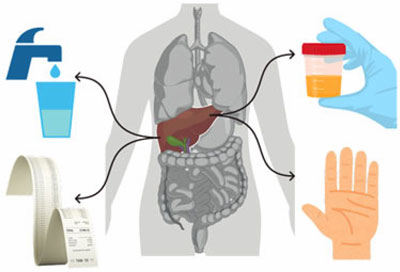
Exposure routes to bisphenol A from drinking water and thermal paper, with urinary excretion as a biomarker.
https://dx.doi.org/10.21577/0103-5053.20250172
J. Braz. Chem. Soc. 2026
Method-Driven Variability in the Volatile Terpene Profile of Mikania sp. and Its Implications for Insect-Plant Interactions in Chemical Ecology
Isabelle Zilli  ; Paulo H. G. Zarbin
; Paulo H. G. Zarbin
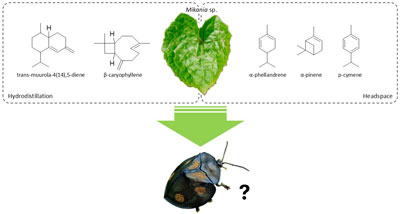
This graphical abstract illustrates how extraction methodology can alter the perceived volatile profile of Mikania sp. The resulting chemical message can directly influence which cues are available to insects, highlighting that methodological choice is critical in chemical ecology studies.
https://dx.doi.org/10.21577/0103-5053.20250171
J. Braz. Chem. Soc. 2026
Promoting Osteoblast Proliferation and Activity by Combining Natural Rubber Hybrid Systems with Calcium Phosphate and Silica Particles
Luciana M. da Silva  ; Rodney M. do Nascimento
; Rodney M. do Nascimento  ; Naiara C. Oliveira
; Naiara C. Oliveira  ; Beatriz O. Lopes
; Beatriz O. Lopes  ; Ana Caroline R. M. Leite
; Ana Caroline R. M. Leite  ;
;
Mirna M. Bezerra  ; Renata F. C. Leitão
; Renata F. C. Leitão  ; Francisco Airton C. da Rocha
; Francisco Airton C. da Rocha  ; Amauri J. de Paula
; Amauri J. de Paula  ; Virgínia C. C. Girão-Carmona
; Virgínia C. C. Girão-Carmona
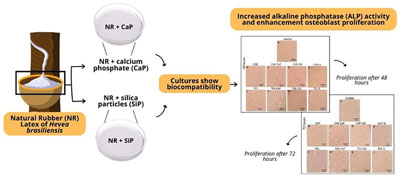
Development and analysis of the influence of hybrid natural rubber (NR) systems, incorporated with CaP and SiP, on the morphology, enzymatic activity (alkaline phosphatase) and viability (3-(4,5-dimethylthiazol-2-yl)-2,5-diphenyl tetrazolium bromide (MTT) assay) of murine osteoblasts.
https://dx.doi.org/10.21577/0103-5053.20250170
J. Braz. Chem. Soc. 2026
Synthesis and Characterization of Sustainable Hydrochar from Banana Peels for the Removal of Iron and Manganese Ions in Aqueous Systems
Marcela O. B. Cortez  ; Karina S. da Silva
; Karina S. da Silva  ; Luísa F. M. Mazzini
; Luísa F. M. Mazzini  ; Ueslei G. Favero
; Ueslei G. Favero  ; Leonarde N. Rodrigues
; Leonarde N. Rodrigues  ;
;
Renê C. da Silva  ; Maria do Carmo Hespanhol
; Maria do Carmo Hespanhol  ; Leandro R. de Lemos
; Leandro R. de Lemos  ; Renata P. L. Moreira
; Renata P. L. Moreira
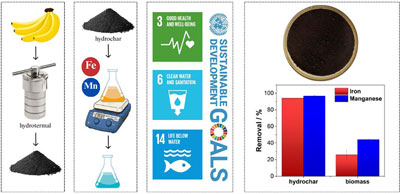
Hydrothermally carbonized hydrochar from banana peel for the removal of iron and manganese from water.
https://dx.doi.org/10.21577/0103-5053.20250169
J. Braz. Chem. Soc. 2026
PVA Films with Carbonized Kraft Lignin: Physico-Chemical Properties and Application in Gas Detection
Lucas Victor B. V. Fré  ; Amanda S. M. de Freitas
; Amanda S. M. de Freitas  ; Jéssica S. Rodrigues
; Jéssica S. Rodrigues  ; André Vitor S. Simõis
; André Vitor S. Simõis  ; Daniel Komatsu
; Daniel Komatsu  ;
;
Vinicius Jessé R. de Oliveira  ; Clarissa A. Olivati
; Clarissa A. Olivati  ; Marystela Ferreira
; Marystela Ferreira

Polyvinyl alcohol (PVA) associated with carbonized Kraft lignin produced in four ratios (0, 10, 30, and 50%), characterizations and application as gas detector.
https://dx.doi.org/10.21577/0103-5053.20250168
J. Braz. Chem. Soc. 2026
Performance of a Molecularly Imprinted Bifunctional Adsorbent Poly(methacrylic acid-phenyltrimetoxysilane) for High-Throughput Solid Phase Extraction of Diuron in Waters and Soymilk Samples
Daniel M. Nanicuacua; Rafael J. Leal  ; Maria Cristina Solci
; Maria Cristina Solci  ; Maikon Thiago do Nascimento; Diego P. dos Santos;
; Maikon Thiago do Nascimento; Diego P. dos Santos;
César Ricardo T. Tarley  ; Mariana G. Segatelli
; Mariana G. Segatelli

Extraction and preconcentration of diuron in environmental waters and soymilk samples using a bifunctional hybrid molecularly imprinted polymer (BHMIP) as a selective adsorbent in solid phase extraction (SPE) followed by high-performance liquid chromatography with diode array detector (HPLC-DAD) determination.
https://dx.doi.org/10.21577/0103-5053.20250167
Review J. Braz. Chem. Soc. 2025
From Protection to Pollution: The Impact of Mask Use on Micro(nano)plastic Release
Gabriel M. Ferraz  ; Jonatas S. Carvalho
; Jonatas S. Carvalho  ; Gustavo B. dos Santos
; Gustavo B. dos Santos  ; Natasha Caroline C. Sousa
; Natasha Caroline C. Sousa  ; Ricardo Custódio
; Ricardo Custódio  ;
;
Aline S. de Moraes; Ingrid T. de Miranda; Iseult Lynch  ; Roberta C. Urban
; Roberta C. Urban
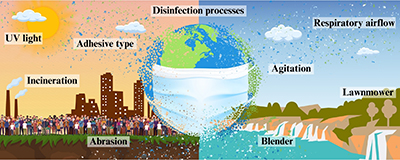
This graphical abstract depicts the environmental and anthropogenic factors contributing to the degradation of face masks into microplastics and nanoplastics, highlighting their potential pathways across urban and natural ecosystems.
https://dx.doi.org/10.21577/0103-5053.20250165
Full Paper J. Braz. Chem. Soc. 2025
Integration of Machine Learning, QSAR, and Polypharmacology for Multitarget Drug Discovery in Neuropsychiatric Disorders: Prediction of Serotonergic and Dopaminergic Receptor Inhibitors
Caroline M. Folchini  ; Alexandre F. Cobre
; Alexandre F. Cobre  ; Karime Z. A. Domingues
; Karime Z. A. Domingues  ; Luana M. Ferreira
; Luana M. Ferreira  ; Mariana M. Fachi
; Mariana M. Fachi  ;
;
Roberto Pontarolo
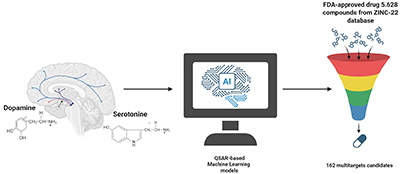
This study employs quantitative structure-activity relationship (QSAR)-based machine learning models, validated with bioactivity data (half-maximal inhibitory concentration (IC₅₀)) for dopaminergic and serotonergic receptors, to screen US Food and Drug Administration (FDA)-approved compounds as candidates for multitarget drug repurposing in the treatment of neuropsychiatric disorders.
https://dx.doi.org/10.21577/0103-5053.20250164
Review J. Braz. Chem. Soc. 2025
Mass Spectrometry-Based Metabolomics for the Development of Bioinputs: A Review on Plant Growth-Promoting Yeasts
Miriã A. Souza  ; Tallyta S. Teixeira
; Tallyta S. Teixeira  ; Jorge C. Rodrigues Neto
; Jorge C. Rodrigues Neto  ; Caio O. G. Silva
; Caio O. G. Silva  ; Catharine A. Bomfim
; Catharine A. Bomfim  ; Eder A. Barbosa
; Eder A. Barbosa  ;
;
Félix G. de Siqueira  ; Patrícia V. Abdelnur
; Patrícia V. Abdelnur
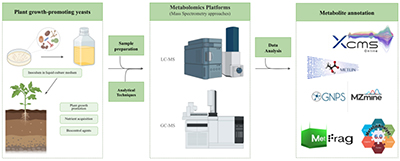
Mass spectrometry-based metabolomics for the development of bioinputs: a review on plant growth-promoting yeasts.
https://dx.doi.org/10.21577/0103-5053.20250163
Full Paper J. Braz. Chem. Soc. 2025
Surface-Enhanced Raman Scattering-Based Adsorption Isotherm of 4-Mercaptobenzoic Acid in Chitosan-Protected Gold Nanoparticles
Patrícia L. de Oliveira  ; Patrícia B. Santos; Giovana A. Pimentel; Débora G. de Oliveira; Gustavo F. S. Andrade
; Patrícia B. Santos; Giovana A. Pimentel; Débora G. de Oliveira; Gustavo F. S. Andrade
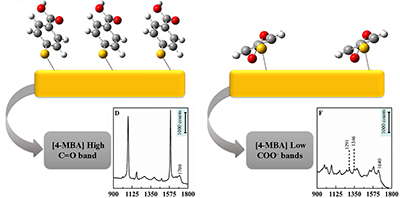
When 4-mercaptobenzoic acid (4-MBA) concentration decreases, the molecules reorient, leading to interaction of the carboxylate group with the gold nanoparticles (AuNP) surface, besides the thiolate interaction, as probed by surface-enhanced Raman scattering (SERS).
https://dx.doi.org/10.21577/0103-5053.20250162
J. Braz. Chem. Soc. 2025
Lipid Quality and Oxidative Stability in Industrial Foods for Dogs and Cats
Amanda M. Silva; Marcela Zangirolami  ; Amanda C. Assakawa; Patricia D. S. Santos; Eloize S. Alves; Ricardo S. Vasconcellos;
; Amanda C. Assakawa; Patricia D. S. Santos; Eloize S. Alves; Ricardo S. Vasconcellos;
Oscar O. Santos

The composition of fatty acids and antioxidants in dry extruded food for dogs and cats using gas chromatography flame ionization detector (GC-FID) and high-performance liquid chromatography with a diode-array detector (HPLC-DAD) techniques.
https://dx.doi.org/10.21577/0103-5053.20250161
J. Braz. Chem. Soc. 2025
Influence of Biodiesel on Emissions of Criteria and Non-Criteria Primary and Secondary Pollutants
Fabiola Dayane Netto; Sergio M. Corrêa  ; Thainá C. e Souza
; Thainá C. e Souza  ; Taisa C. Dantas
; Taisa C. Dantas  ; Isabella E. dos Santos
; Isabella E. dos Santos  ;
;
Luiz Carlos Daemme  ; Renato A. Penteado Neto
; Renato A. Penteado Neto  ; Leonardo C. G. Kobiraki
; Leonardo C. G. Kobiraki
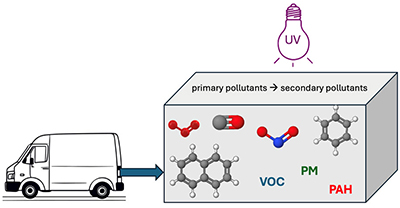
Environmental chamber used to sample primary pollutants and convert them into secondary pollutants using UV lamps to simulate sunlight.
https://dx.doi.org/10.21577/0103-5053.20250160
J. Braz. Chem. Soc. 2025
Application of Virtual Screening Methods for the Identification of Novel Antileishmanial Therapies: Rational Discovery of Synthetic Inhibitors Targeting Triosephosphate Isomerase
Lívia Carolina A. Figueiredo  ; Isabella G. de Carvalho
; Isabella G. de Carvalho  ; Alessandra Mara de Sousa
; Alessandra Mara de Sousa  ; Carlos Othavio G. C. Machado
; Carlos Othavio G. C. Machado  ;
;
William O. Soté  ; Rubens L. do Monte-Neto
; Rubens L. do Monte-Neto  ; Alex G. Taranto
; Alex G. Taranto  ; Moacyr Comar Júnior
; Moacyr Comar Júnior  ; Eduardo Sérgio da Silva
; Eduardo Sérgio da Silva  ;
;
Rafael G. Teixeira-Neto
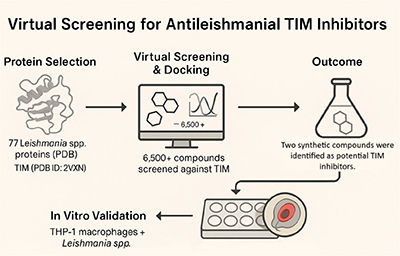
The graphical abstract illustrates the workflow of a virtual screening study targeting Leishmania triosephosphate isomerase (TIM), highlighting protein selection, compound docking, molecular dynamics and in vitro validation.
https://dx.doi.org/10.21577/0103-5053.20250159
J. Braz. Chem. Soc. 2025
Loading the Anionic [Pd(dipic)2]2− Complex into the Cavities of Magnetic and Non‑Magnetic Halloysite Nanotubes Conjugated with Folic Acid and Investigating the in vitro Therapeutic Effects
Haibin Ding  ; Liu Shuang
; Liu Shuang  ; Mostafa Heidari Majd
; Mostafa Heidari Majd
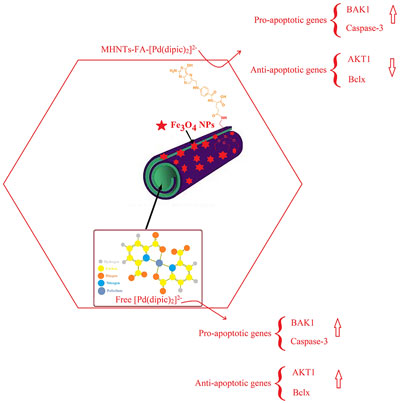
Encapsulation of [Pd(dipic)2]2- (dipic: dipicolinic acid) within folic acid-modified magnetic halloysite nanotubes (MHNTs-FA) triggers both intrinsic and extrinsic apoptosis pathways, significantly downregulating AKT1, a key protein in cell survival and drug resistance. In contrast, free [Pd(dipic)2]2- fails to overcome resistance.
https://dx.doi.org/10.21577/0103-5053.20250158
J. Braz. Chem. Soc. 2025
Design of a Low-Cost Electrochemical Reactor System for Graphene Oxide Production
Hugo L. Coutinho Neto  ; Mariana P. de Azevedo; Arley S. do Nascimento; Cynthia Marina R. Gómez
; Mariana P. de Azevedo; Arley S. do Nascimento; Cynthia Marina R. Gómez  ; Daniel Grasseschi
; Daniel Grasseschi
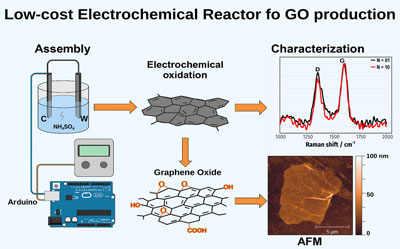
A low-cost Arduino automated electrochemical reactor was developed for graphene oxide (GO) synthesis via electrochemical exfoliation of graphite.
https://dx.doi.org/10.21577/0103-5053.20250157
J. Braz. Chem. Soc. 2025
Immunomodulatory Effect of the Ursolic Acid/Poly-β-cyclodextrin Complex in an Experimental Model of Multiple Sclerosis
Maiara R. Salvador; Maria A. G. Carneiro; Jully C. S. Viana; Vitória A. Lopes; Gefferson L. S. Gomes; Oswaldo C. Junior;
Mariana A. R. Rezende; Jeferson G. Silva; Erly G. Azevedo; Alessandra P. Carli; Heder J. Ribeiro; Caio C. S. Alves;
Ângelo M. L. Denadai  ; Sandra B. R. Castro
; Sandra B. R. Castro
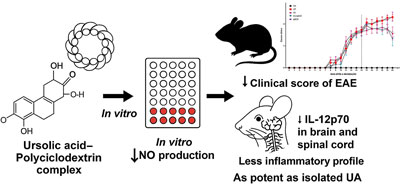
This work demonstrates the effects of the ursolic acid/polycyclodextrin complex, which reduced nitric oxide production in vitro and attenuated the clinical severity of experimental autoimmune encephalomyelitis, showing an anti-inflammatory profile similar to isolated ursolic acid.
https://dx.doi.org/10.21577/0103-5053.20250156
J. Braz. Chem. Soc. 2025
Effect of Magnesium Phosphate Anodizing Electrolyte on Corrosion Resistance of Aluminum Alloy
Mindi Deng; Jinzhi Chen; Xu Zhou; Zhixiong Xie  ; Jie Min
; Jie Min
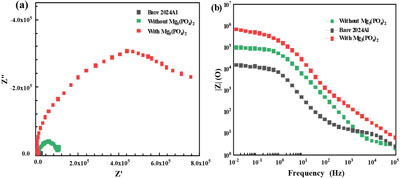
The impedance modulus of the samples at 0.01 Hz exceeds 106 Ω after adding magnesium phosphate, which is one order of magnitude higher than that without adding magnesium phosphate and two orders of magnitude higher than that of bare 2024 aluminum alloy.
https://dx.doi.org/10.21577/0103-5053.20250155
J. Braz. Chem. Soc. 2025
Magre‑II: Predicting Aggregation Region in Proteins with Machine Learning, Based on Tertiary Structure
Ana Ligia Scott  ; Carlos A. Moreira
; Carlos A. Moreira  ; Eric Allison Philot
; Eric Allison Philot  ; Simone Q. Pantaleão
; Simone Q. Pantaleão
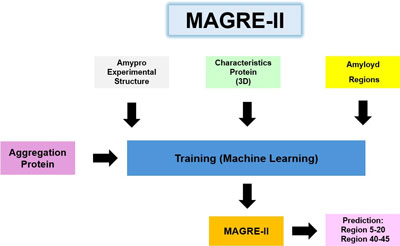
We propose an optimized version of the Magre-II tool for predicting aggregation regions in proteins using machine learning.
https://dx.doi.org/10.21577/0103-5053.20250154
J. Braz. Chem. Soc. 2025
Synergistic Characteristics of Co-Hydrothermal Carbonization of Sewage Sludge and Waste Biomass
Lei Wang  ; Zhiyuan Zhang
; Zhiyuan Zhang  ; Ying Zhao
; Ying Zhao  ; Lilin Zhang
; Lilin Zhang
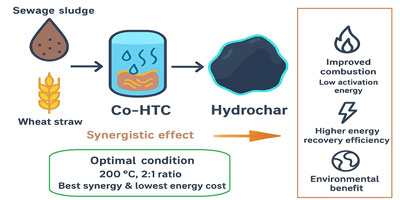
Sewage sludge and wheat straw were synergistically converted via hydrothermal carbonization. The optimal condition (200 °C, 2:1 ratio) yielded hydrochar with superior combustion performance.
https://dx.doi.org/10.21577/0103-5053.20250153
J. Braz. Chem. Soc. 2025
New 2-(Quinolin-4-yloxy)acetamides: Synthesis, Antitubercular Evaluation, and Structure-Activity Relationships
Estevão S. Grams; Settypalli Triloknadh; Alessandro S. Ramos; Raoní S. Rambo; Mauro N. Muniz; Bruno L. Abbadi;
Fernanda S. M. Hopf; Nathalia Sperotto; Julia S. Garay; Guilherme A. Gonçalves; Josiane D. Paz; Cristiano V. Bizarro;
Luiz Augusto Basso; Pablo Machado
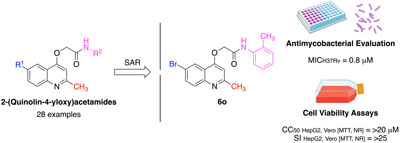
This study reports the synthesis and biological evaluation of a series of 2-(quinolin-4-yloxy) acetamides as antitubercular agents. The work highlights the structure-activity relationships, cytotoxicity, and aqueous solubility of the most active derivatives, identifying compound 6o as a valuable scaffold for future medicinal chemistry efforts.
https://dx.doi.org/10.21577/0103-5053.20250138
J. Braz. Chem. Soc. 2025
From Waste to Worth: Glycerol-Driven Transformation of PET into Functional Polymers
Daniele J. Caffeu  ; Gabriel I. dos Santos
; Gabriel I. dos Santos  ; Rafael T. Alarcon
; Rafael T. Alarcon  ; Caroline Gaglieri
; Caroline Gaglieri  ; Gilbert Bannach
; Gilbert Bannach
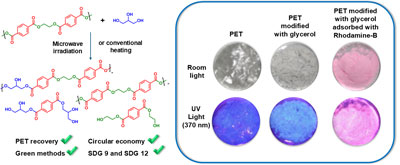
A new recycling route for polyethylene terephthalate (PET) waste was developed through its partial depolymerization with glycerol, yielding a material with potential adsorbent properties.
https://dx.doi.org/10.21577/0103-5053.20250137
J. Braz. Chem. Soc. 2025
Evaluation of the Inhibitory Effect of The Enzyme Monoamine Oxidase A by Species of the Genus Spondias: An in silico and in vitro Study
Mônica A. Medeiros; Leandro P. de Lima; Mariana P. Paim; César A. Brüning; Cristiani F. Bortolatto; Elayne B. F. Pinheiro
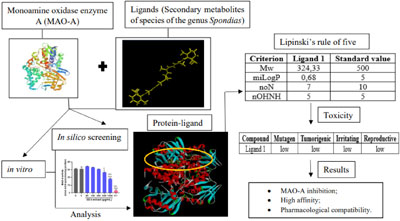
Secondary metabolites from species of the Spondias genus were evaluated as potential inhibitors of monoamine oxidase A (MAO-A) through molecular docking studies and in vitro assays. The results revealed high binding affinity and enzyme inhibition, suggesting promising candidates for the treatment of depression.
https://dx.doi.org/10.21577/0103-5053.20250136
J. Braz. Chem. Soc. 2025
Natural Organic Residues Enriched with Ca and Mg: Application in Lettuce Grown with Water Blade
Ítala Carla de Amorim Neto; Jôse R. A. Lima; Márcio Aurélio L. dos Santos; Andrea P. Fernandes; Tamyres Farias;
Luciana C. de Oliveira  ; Wander Gustavo Botero
; Wander Gustavo Botero
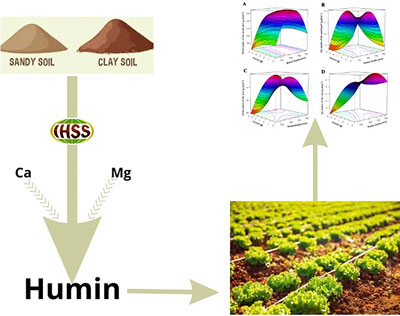
Natural organic residues enriched with Ca and Mg for application in lettuce grown in water depths demonstrated positive results in crop growth and development.
https://dx.doi.org/10.21577/0103-5053.20250135
Review J. Braz. Chem. Soc. 2025
From Bench to Bedside in the Global South: OncoTherad (MRB-CFI-1) Experience as Scalable and
Cost-Effective Model for Nanoimmunotherapy Development
Gabriela de Oliveira  ; Adrialdo José Santos
; Adrialdo José Santos  ; Gabriela C. A. Camargo
; Gabriela C. A. Camargo  ; Juliana M. Gonçalves
; Juliana M. Gonçalves  ; João Carlos C. Alonso
; João Carlos C. Alonso  ;
;
Nelson Durán  ; Wagner José Fávaro
; Wagner José Fávaro
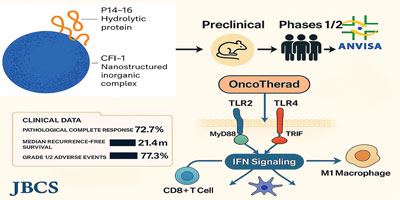
OncoTherad (MRB-CFI-1), a novel nanoimmunotherapy developed in Brazil, activates innate immune system toll like receptors pathways to enhance antitumor immunity. This cost-effective innovation exemplifies scalable immunotherapy from the Global South.
https://dx.doi.org/10.21577/0103-5053.20250134
Full Paper J. Braz. Chem. Soc. 2025
Formulation Stability of Sunscreens with Passion Fruit Seed and Paracress Extracts
Gisláine C. Silva  ; Rodney A. F. Rodrigues
; Rodney A. F. Rodrigues  ; Carla B. G. Bottoli
; Carla B. G. Bottoli
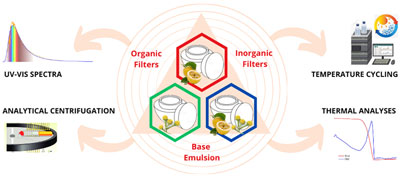
The physical and chemical stability of emulsions containing a piceatannol-rich extract from passion fruit seeds, a spilanthol-rich extract from paracress, and UV filters was assessed by UV-Vis, analytical centrifugation, thermal analyses, and exposure to temperature cycles.
https://dx.doi.org/10.21577/0103-5053.20250132
J. Braz. Chem. Soc. 2025
Computational Study of Natural Therapeutic Alternatives against CBX4 Associated with the Development of Presbycusis
Carlos Velez-Duncan  ; Jairo Mercado-Camargo
; Jairo Mercado-Camargo  ; Arnulfo Taron Dunoyer
; Arnulfo Taron Dunoyer  ; Neyder Contreras-Puentes
; Neyder Contreras-Puentes  ; Antistio Alvíz-Amador
; Antistio Alvíz-Amador
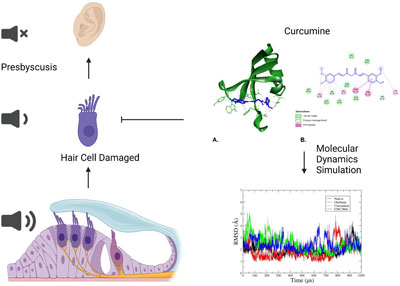
Binding of ligands to the Chromobox 4 (CBX4) protein to prevent potential oxidative stress and noise-induced deafness.
https://dx.doi.org/10.21577/0103-5053.20250131
J. Braz. Chem. Soc. 2025
LIBS and Hyperspectral Imaging as a Real-Time Process Control Tool for Metal Recovery from E-Waste
Dennis S. Ferreira  ; Edenir R. Pereira-Filho
; Edenir R. Pereira-Filho
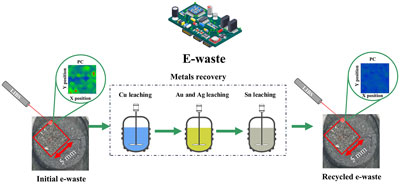
Laser-induced breakdown spectroscopy (LIBS) and hyperspectral imaging enable real-time monitoring and control of metal leaching from e-waste, supporting efficient and sustainable resource recovery.
https://dx.doi.org/10.21577/0103-5053.20250130
J. Braz. Chem. Soc. 2025
PDMS/PVDF Nanofiber Membrane with Hydrophobic Property by Electrospinning for Ultrafast Oil-Water Separation
Xin Cao; Aiqin Tian; Sansan Ding; Lei Xu
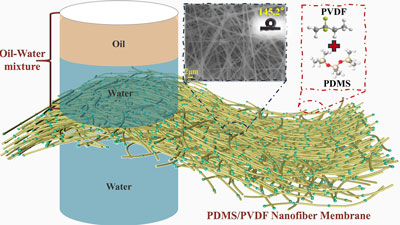
The polydimethylsiloxane/polyvinylidene fluoride (PDMS/PVDF) membrane had the best hydrophobicity (145.2°), and the separation efficiency could still reach 95.0% after 20 cycles.
https://dx.doi.org/10.21577/0103-5053.20250129
J. Braz. Chem. Soc. 2025
The Temporal Response of Trace and Toxic Elements to Landscape Indices of Doce River Basin, Brazil after the Fundão Dam Collapse
Nathália R. Oliveira  ; Fernanda C. Pinheiro
; Fernanda C. Pinheiro  ; Mariana R. Almeida
; Mariana R. Almeida  ; Diego G. F. Pujoni
; Diego G. F. Pujoni  ; Gabriel Pereira
; Gabriel Pereira  ; Francielle Cardozo
; Francielle Cardozo  ; José F. Bezerra-Neto
; José F. Bezerra-Neto  ; Letícia M. Costa
; Letícia M. Costa
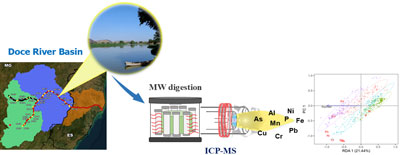
In general, in the upper Doce River, the concentration of As, Cr, Cu, Fe, Mn, Ni, and Pb exceeds the maximum limits of the Brazilian Resolution in the rainy season.
https://dx.doi.org/10.21577/0103-5053.20250128
J. Braz. Chem. Soc. 2025
Cobalt-Nickel Nanocatalyst Supported on Phosphorus-Doped Hydrochar from Malt Bagasse Waste Synthesized via One-Pot Wet Pyrolysis for Safe and Sustainable Hydrogen Fuel Evolution from Sodium Borohydride
Marcela M. Ferreira; Gessica C. Dias; Tatianny A. Andradre; Iterlandes Machado Junior; José O. Marques Neto;
Aline Aparecida S. Silva; Renata P. L. Moreira  ; Tiago A. Silva
; Tiago A. Silva
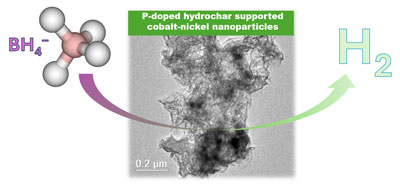
Malt bagasse residue is converted by sustainable method into P-doped hydrochar and applied as support of Co-Ni nanocatalysts for H2 evolution.
https://dx.doi.org/10.21577/0103-5053.20250127
J. Braz. Chem. Soc. 2025
Innovative Antimicrobial Nanoemulsion with Controlled Release Properties Based on Melaleuca alternifolia Essential Oil
Giselle G. C. Oliveira  ; Amanda S. S. Sousa
; Amanda S. S. Sousa  ; Maria G. I. F. Nunes; Cristiane M. F. Moritz
; Maria G. I. F. Nunes; Cristiane M. F. Moritz  ; Otávio A. Sakai
; Otávio A. Sakai
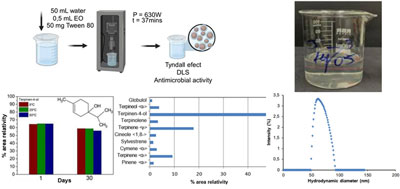
Melaleuca alternifolia essential oil nanoemulsion was developed for pharma cosmetic applications, with a detailed analysis of its components, thermal stability evaluation, and droplet size characterization.
https://dx.doi.org/10.21577/0103-5053.20250126
J. Braz. Chem. Soc. 2025
Challenging Dissimilatory Adenosine 5'-Phosphosulfate (APS) Reductase with Assimilatory APS Reductase Inhibitors by Docking and Molecular Dynamics Simulations: A Computational Study
Talis U. Silva  ; Magaly G. Albuquerque
; Magaly G. Albuquerque  ; Henrique N. Lança
; Henrique N. Lança  ; Everton T. Silva
; Everton T. Silva  ; Carlos M. R. Sant'Anna
; Carlos M. R. Sant'Anna  ; Camilo H. S. Lima
; Camilo H. S. Lima  ; Sérgio P. Machado
; Sérgio P. Machado
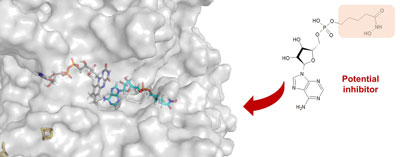
Binding mode of compound 16d (potential inhibitor) in the active site of the dissimilatory adenosine 5'-phosphosulfate reductase (APSrAB).
https://dx.doi.org/10.21577/0103-5053.20250125
J. Braz. Chem. Soc. 2025
Theoretical Investigation on a Novel Fluorescent Probe for Sulfite: Structural, Electronic, and Spectral Characteristics Underlying Detection
Yue Ma  ; Yongjin Peng
; Yongjin Peng  ; Shuang Hou
; Shuang Hou
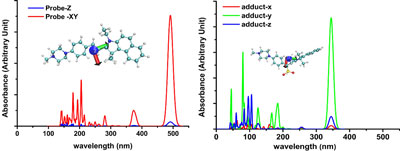
Simulated UV-Vis absorption spectrum of probe and sulfite adduct based on PBE0/def2TZVPD method.
https://dx.doi.org/10.21577/0103-5053.20250124
J. Braz. Chem. Soc. 2025
Chemometrics of Seasonal Variation on Essential Oil Chemical Composition of Myrciaria tenella (DC.) O. Berg
Luana S. P. Barros  ; Rian M. Viana; Ellen N. S. da Cruz; Maria Nancy N. de Lima; Rosa Helena V. Mourão; Joyce Kelly R. da Silva
; Rian M. Viana; Ellen N. S. da Cruz; Maria Nancy N. de Lima; Rosa Helena V. Mourão; Joyce Kelly R. da Silva  ;
;
Pablo Luis B. Figueiredo

The figure presents the methodological flow of the study of the volatile chemical constituents of Myrciaria tenella. The botanical identification of the species was performed, followed by the extraction of volatile compounds by hydrodistillation. The samples were analyzed by gas chromatography coupled with mass spectrometry to identify (E)-caryophyllene, δ-cadinene, α-calacorene, caryophyllene oxide, and 1-epi-cubenol. Finally, the data obtained were subjected to multivariate statistical analyses.
https://dx.doi.org/10.21577/0103-5053.20250123
Online version ISSN 1678-4790 Printed version ISSN 0103-5053
Journal of the Brazilian Chemical Society
JBCS Editorial and Publishing Office
University of Campinas - UNICAMP
13083-970 Campinas-SP, Brazil
Free access









